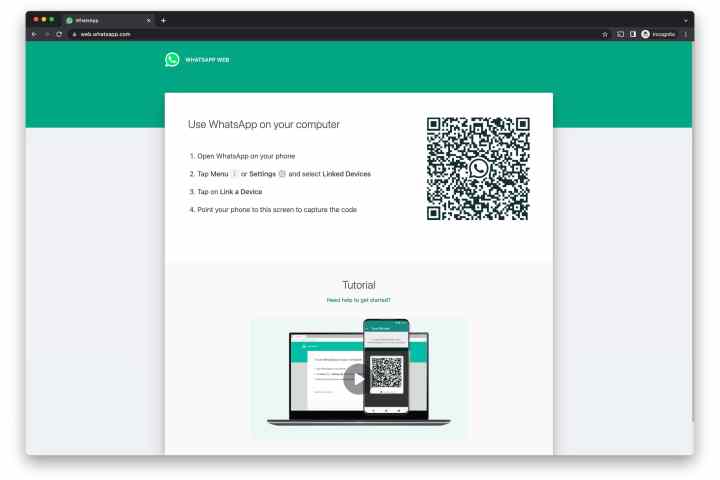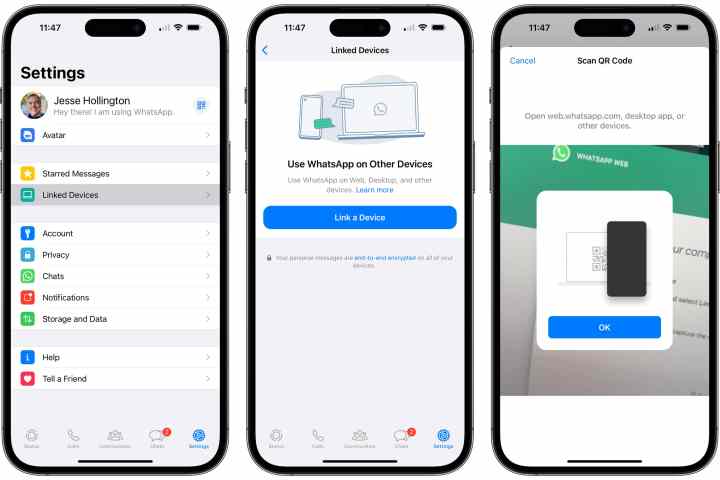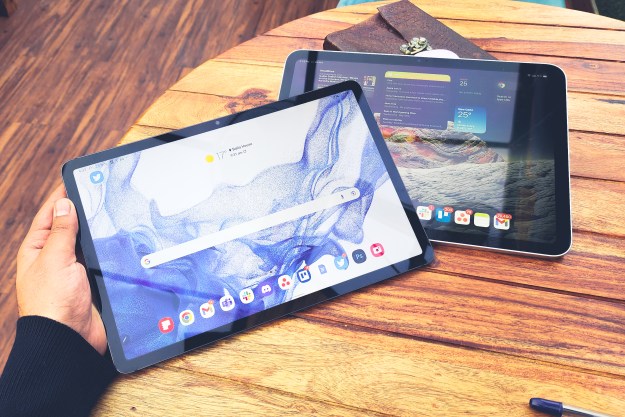WhatsApp, the messaging service owned by Facebook, is one of the most popular international online communication services on the planet. WhatsApp Web is a browser version of the WhatsApp Messenger chat and video/voice calling app from iOS and Android. Desktop WhatsApp comes in two flavors — a downloadable system app for Mac and Windows or a browser-based version.
WhatsApp Web and WhatsApp Desktop function as extensions of your mobile WhatsApp account, and all messages are synced between your phone and your computer, so you can view conversations on any device regardless of where they are initiated. Here, we’ll walk you through how to use the WhatsApp browser app.
The process and interface are identical in iOS 15 and iOS 16. Similarly, the Android 13 interface is the same as the previous version.
How to use WhatsApp Web on an iPhone
Using WhatsApp Web from your iPhone is easy; just launch WhatsApp Web in Chrome, Firefox, Opera, Safari, or Edge and scan the QR code on the computer with the WhatsApp mobile app from your phone.
Step 1: In your computer's browser, navigate to https://web.whatsapp.com.

Step 2: Launch WhatsApp on your iPhone.
Step 3: On the iPhone, select Settings > Linked Devices.

Step 4: Select the Link a Device button. The camera view will open in WhatsApp.
Step 5: Hold your phone up to the code on your screen to pair it up. The WhatsApp page in your browser should refresh immediately to log into WhatsApp and show your current list of chats.
How to use WhatsApp Web for Android
For Android phones, here are the steps to follow after opening the WhatsApp website on your computer:
Step 1: On your Android phone, launch WhatsApp and select the three dots in the upper-right of the Chat pane.
Step 2: Select Linked devices and then select Link a device.
Step 3: Hold your phone up to the QR code on your computer to pair it.
Step 4: Your smartphone account is now linked to the web version of the app.
Step 5: From there you can send and receive messages from your computer’s desktop browser.
WhatsApp Web features
After scanning the QR code, you can view your WhatsApp chat list directly on the web page. On the left, you can see your chats by clicking a contact to open the chat and your message history, if you saved it.
On the top-left of the web page, three icons are available: Status, New chat, and Menu, which offers a list of nested options. The Status option reveals all statuses posted by your contacts, along with the ability to respond from the reply area at the bottom of the pane. Clicking New chat opens the contacts list on the left side of the page. From here, you can create a new group or begin a conversation.
The three-dot drop-down menu lets you create a new group, change information in your profile, search archived chats, view starred messages, change settings like notifications and chat wallpaper, or log out.

Sending messages
WhatsApp Web is as easy to use as the mobile app, and the interface will look familiar.
Step 1: To send a message from your desktop, click on an existing chat or click on the New chat icon and select the contact you wish to interact with. Here, you can see previous chats, if they are saved, or alternately see the message bar at the bottom.
Step 2: Click on the Type a message bar and start chatting.
Step 3: When you’re done with your message, click the Enter key on your keyboard to transmit — or just click on the Send icon.
Step 4: If you want to include documents, images, or recordings, just attach the files from your desktop and send them as you would any other message by clicking on the paper clip Attach icon at the bottom of the current chat.
Install WhatsApp on your system
WhatsApp also gives users the option to have a Windows or Mac desktop client that you can download directly from the app’s website.
Step 1: Follow the installer’s instruction prompts once you download the app (which is essentially just a replica of the web-based app) on Windows. If you’re using a Mac, you can launch WhatsApp once you drag the icon to your Applications folder.
Step 2: Launch it, and you’ll receive a message asking you to scan a QR code on both the web browser version and the web app. Remember that WhatsApp keeps you signed in until you manually sign out.
Step 3: When you’re ready to sign out, navigate to the WhatsApp menu on your cell phone and select Log out from all devices. If you’re on a computer, you can click the three-dot icon at the top of the message and select the Log out button.
Editors' Recommendations
- WhatsApp now lets you add short video messages to chats
- The best dating apps in 2023: our 23 favorite ones
- The 5 best Prime Day phone deals you can shop today
- How to add widgets to your iPhone lock screen on iOS 16
- Why you can’t use Apple Pay at Walmart












